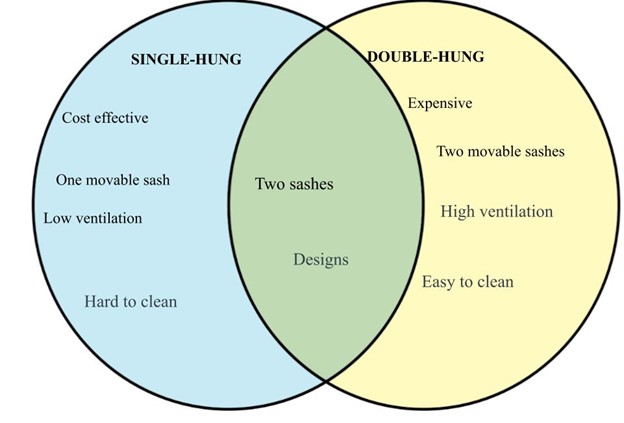Differences between a single and double-hung window
At some point, you might consider replacing your home windows. There are a few factors to consider when deciding to make these changes such as price, style, color, and energy efficiency. But before you start comparing requirements like styles, features, size and installation, you should know the types of windows that are often used that are available for replacement. Single-hung and double-hung windows are two of the most common types of windows around. While there are various similarities between these two popular styles, having a good knowledge of their difference has a long way to go in helping you determine which one is a good fit for your house.
Single-hung window[edit]
A single-hung window has a movable bottom sash and a fixed top sash. Single-hung windows are energy efficient due to the low chances they offer to air leakages and are also considered more cost-effective than double-hung windows due to the simplicity of their design. Besides, most people stick to using a single hung window to maintain their homes' authenticity and vintage look. However, compared to a double-hung window, the ventilation, and energy consumption limit while cleaning a single-hung window is a significant setback.
Double-hung[edit]
A double-hung window has two piled, operating sashes, which is the fraction of the window that grips the pane. This enables the sliding down of the window from the top and sliding up from the bottom, thereby giving room for proper ventilation. Unlike a single-hung window, a double-hung window is easier to clean, however it has high air leakage.
| Single-hung | Double-hung | |
|---|---|---|
| Cost | Cheap | Expensive |
| Ventilation | Low | High |
| Cleaning | Tedious | Easy |
| Energy | High | Low |

